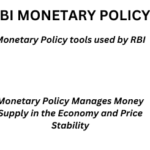Supreme Court;conduct environmental impact assessments for urban development projects: Basics Explained

The Supreme Court on Tuesday asked the Centre and states to take note of the damage to the environment on account of haphazard urban development. The court also urged authorities at the Centre and state level to make necessary provisions to ensure that Environmental Impact Assessment studies are carried out before permission is given for urban development.
LEARNING FROM HOME/ WITHOUT CLASSES/ BASICS
Recently issues like unplanned urban development in Bengaluru that let to compounded problems during the floods in the city or sinking of Joshimath town highlights the challenges associated with planning and regulating haphazard growth in urban areas. Construction, master plans, byelaws, drainage, water security, air pollution or transit, Indian cities were lacking on all counts. Climate change made the challenge of urban planning in 21st century India only more difficult.
The multiple challenges that cities in India face due to rapid urbanization and economic growth are not only putting pressure on Urban infrastructure but even more acute for the peri-urban areas. India’s haphazard urbanization is leading to attendant consequences issues such as lack of access to shelter, infrastructure and services, weak local governments, and environmental concerns that can no longer be ignored.
Growth of urban agglomerations, especially outside urban administrative boundaries, is incoherent and un-coordinated, driven by real estate developers and market forces, rather than urban planning. In cities, there is no system for vulnerability mapping.
Haphazard growth near a city’s periphery translates into inadequate municipal services, such as piped water supply, sewage systems or solid waste management; lacks both sufficient space for vehicular traffic and adequate public transport, inevitably resulting in traffic snarls. Congestion, pollution, vast proportions of uninhabitable accommodation and impoverished living standards characterize most fast-growing Indian cities.
WAY OUT
Cities are economic growth engines India needs a framework for planned, organized, and regulated development the ground reality of urban life in India is far less palatable.
Sensible urbanization that seeks to improve the quality of urban life for all demographies can actually be monetized through a multiplier effect on the economy.
For instance, an efficient public transport system will disincentivize the use of cars, not only lowering pollution but also reducing the dependence on crude oil imports.
Better cities are also about improved human capital, less incidence of disease, more opportunity for leisure and, thus, less stress, making for a more productive, happier workforce in general, which will also contribute to the economy.
Cities’ official, administrative boundaries are often smaller than actual boundaries, and municipal corporation jurisdiction varies considerably across India. States should move fast to form new municipalities and take the initiative to develop areas on the outskirts of urban centres.
the future of urban mobility and urban living needs to evolve on the back of public transportation. The cities need to be very compact and adopt a circular economy system to minimize their negative impacts on the environment.
In Covid context, every city must aspire to become a ‘Healthy city for all’ . This would need a convergence of multi-sectoral efforts at the intersections of spatial planning, public health, and socio-economic development.
the cities are severely understaffed to undertake the tasks of urban planning. The quantity and quality of human resources is crucial to raise the urban planning capacity in the country.
Under the AMRUT Mission, a sub-scheme on the formulation of GIS-based master plans was launched by MoHUA on 26 October 2016 as a 100% centrally funded sub-scheme.
Environmental Impact Assessment
Environmental Impact Assessment (EIA) is a process of evaluating the likely environmental impacts of a proposed project or development, taking into account inter-related socio-economic, cultural and human-health impacts, both beneficial and adverse.
The EIA process is rooted in the 1992 Rio Declaration, which emphasized the need for public participation in environmental decision-making. On January 27, 1994, the Union Ministry of Environment and Forests, under the Environmental (Protection) Act 1986, issued a notification mandating EIA for the expansion or modernization of any activity or the establishment of new projects listed in Schedule 1 of the notification.






0 Comments